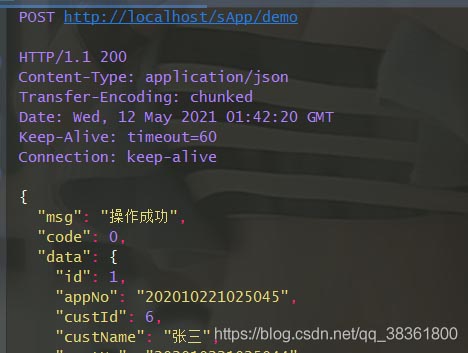映射文件中查询语句部分:
<!--通过map进行条件查询-->
<select id="selectByMap" resultType="com.heiketu.testpackage.pojo.Product">
select * from Products where prod_price = #{prodPrice} and prod_desc = #{prodDesc}
</select>接口文件中对应的查询方法:
//输入参数为Map的条件查询 Product selectByMap(Map<String,Object> map);
测试代码:
//...前面有创建sqlSessionFactory对象和SQLSession对象的代码
Map<String,Object> map = new HashMap<>();
map.put("prodPrice","11.99");
map.put("prodDesc","18 inch teddy bear, comes with cap and jacket");
ProductsMapper mapper = sqlSession.getMapper(ProductsMapper.class);
Product product = mapper.selectByMap(map);
System.out.println(product);map中的key值与映射文件中的select语句#{}占位符中的值需要一一对应
在mybatis中,任何传入的参数都会被对应封装成Map集合,然后会以map的key=value形式取值。
对传入的参数是List集合,mybatis会对list集合进行特殊处理,其取值方式通过list[下标]或collection[下标]的方式入参取值。
对于数组,Mybatis同样会做特殊处理,它会对数组采用array[下标]的方式入参取值。
<!--如果是List集合(或set集合)就如下入参取值-->
<select id="selectByMap" resultType="com.heiketu.testpackage.pojo.Product">
select * from Products where prod_price = #{list[0]} and prod_desc = #{collection[1]}
</select><!--如果是数组就如下入参取值-->
<select id="selectByMap" resultType="com.heiketu.testpackage.pojo.Product">
select * from Products where prod_price = #{array[0]} and prod_desc = #{array[1]}
</select>mybaits传递Map查询数据,choose里面的判断根据自己的map参数类型自行使用,这里传的value是Object类型,这里用不到
<select id="getObjectByMap" parameterType="map" resultMap="BaseResultMap">
select
<include refid="Base_Column_List" />
from
s_app
<where>
<foreach collection="map" item="v" index="k" separator="and">
<if test="v != null and v != ''">
${k} = #{v}
</if>
<!--<choose>
<when test="v instanceof integer">
<if test="v != null">
${k} = #{v}
</if>
</when>
<when test="v instanceof list">
<if test="v != null and v.size() > 0">
${k} in
<foreach collection="list" item="v" separator="," open="(" close=")">
#{v}
</foreach>
</if>
</when>
<when test="v instanceof array">
<if test="v != null and v.length > 0">
${k} in
<foreach collection="array" item="v" separator="," open="(" close=")">
#{v}
</foreach>
</if>
</when>
<otherwise>
<if test="v != null and v != ''">
${k} = #{v}
</if>
</otherwise>
</choose>-->
</foreach>
</where>
</select>这里需要注意的一点是${K},首先map的key一定要跟数据表字段保持一致。如果这里的${K}写成了#{K}则生成的sql语句如下所示:
![]()
程序不会报错,条件无效。${}和#{}的区别相信大家都了解,简单概括就是一个是替换占位符,一个是当做参数传入
@PostMapping({"demo"})
public AjaxResult demo(String appNo, String name) {
Map map = Map.of("app_no", appNo, "cust_name", name);
SApp objectByMap = service.getObjectByMap(map);
return success(objectByMap);
}public interface SAppMapper extends BaseMapper<SApp> {
SApp getObjectByMap(@Param("map") Map<String, Object> map);
}

总结:这样的好处是参数的个数不固定、参数的类型不固定,适用的场景较多。缺点也很明显map传参可读性差,参数难以控制等。以上为个人经验,希望能给大家一个参考,也希望大家多多支持。